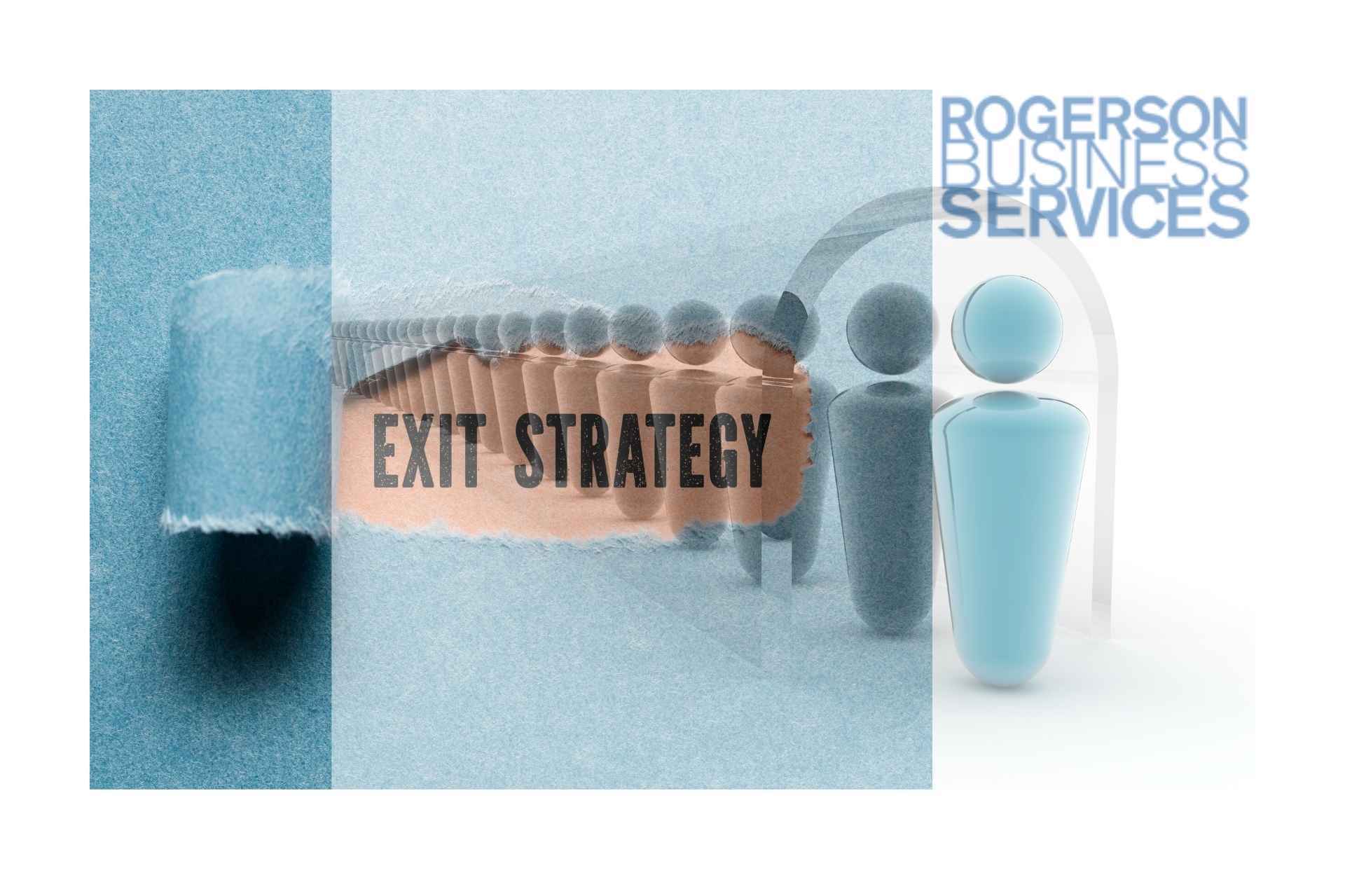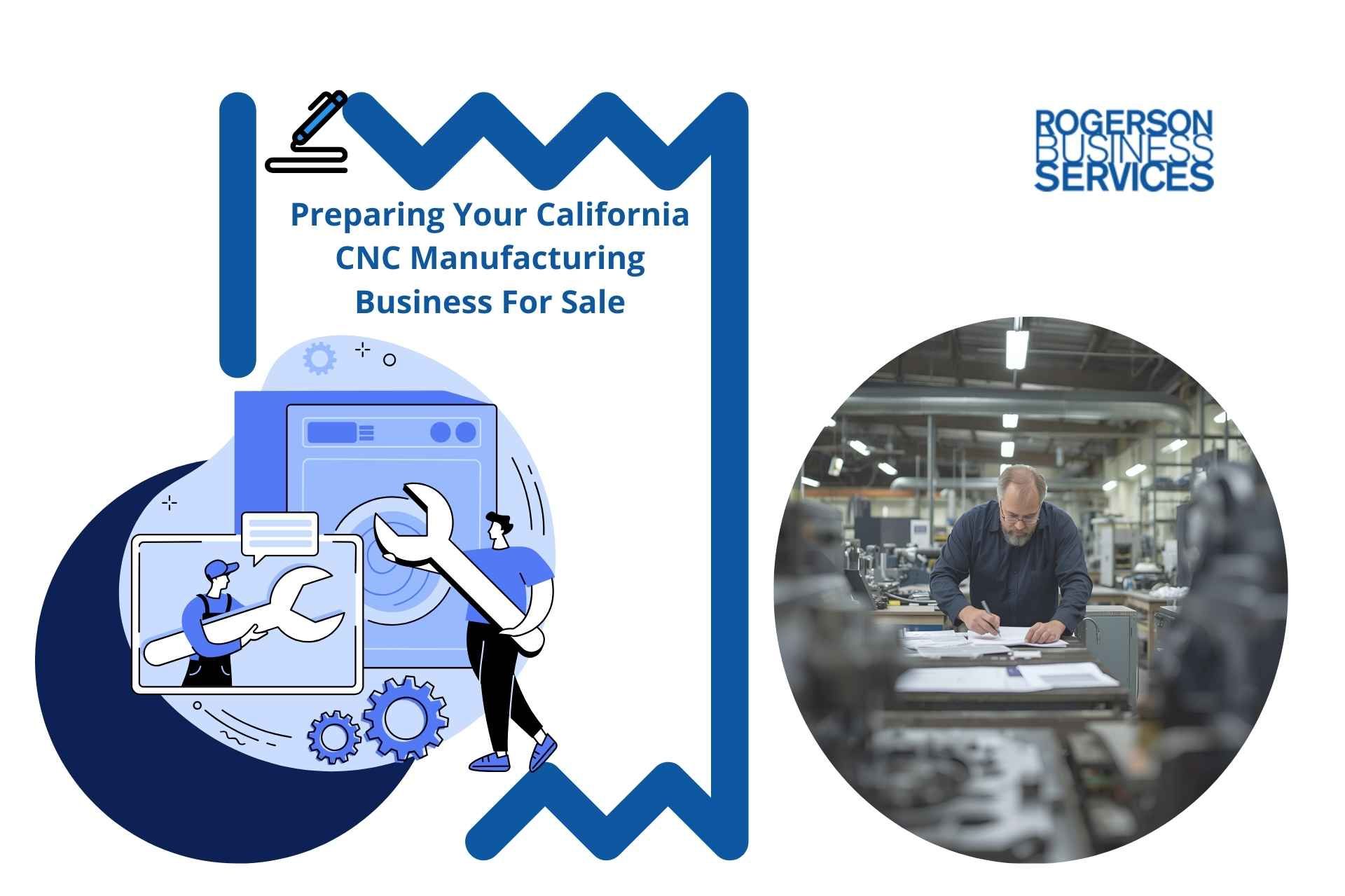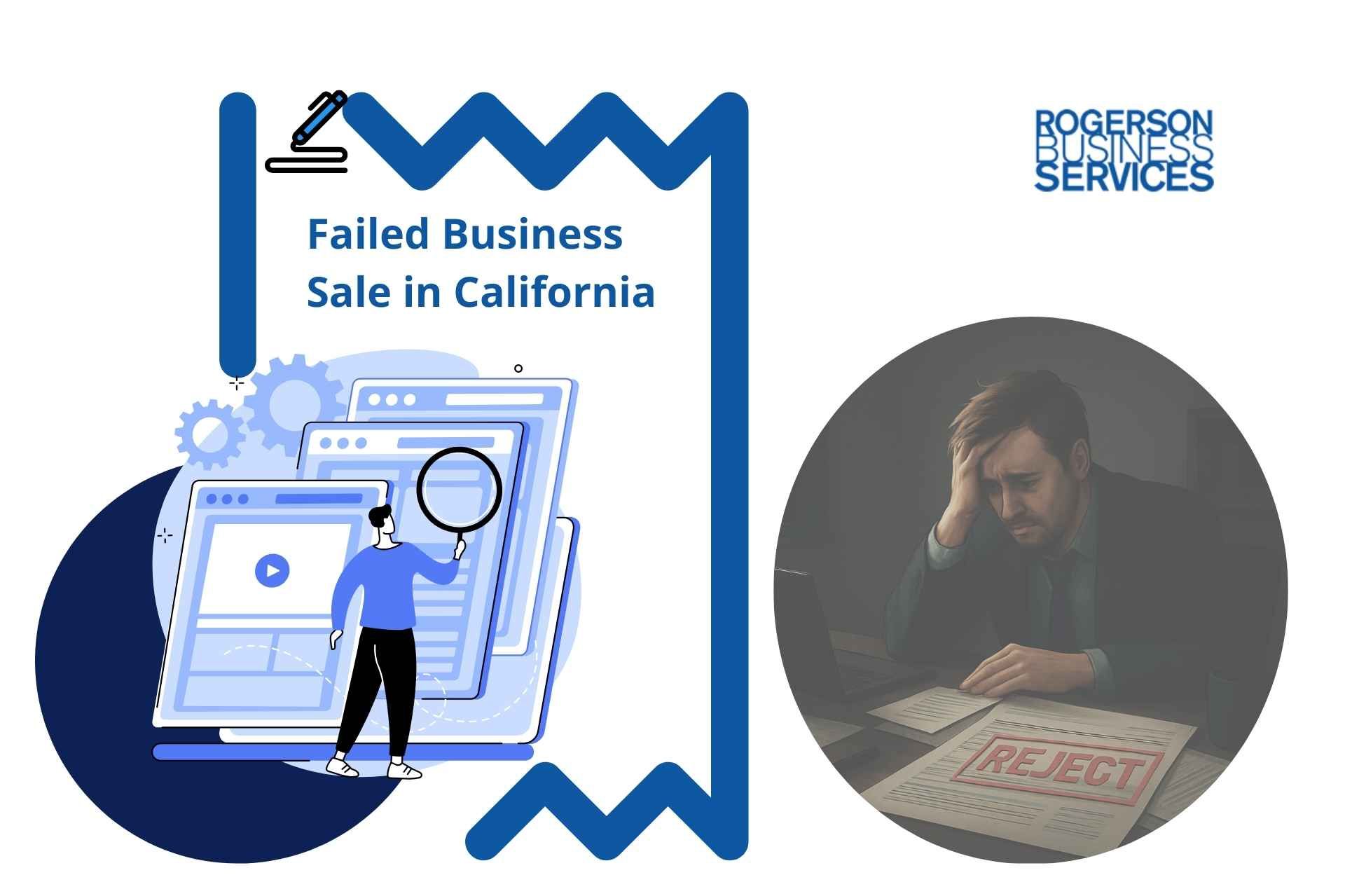How To Prepare A Business Exit Strategy
Business Exit Strategy

Leaving a business is not an unusual occurrence. Many situations warrant this result, some of which are:
- Retirement and selling the business to either a third party or family member or key employee or employees.
- An unsolicited offer for the business such as an outright sale or a Merger.
- Closing the doors.
All these circumstances are unique in their way. However, a common denominator associated with them all is the need to prepare a business exit strategy.
There are many routes you can take to create and plan an effective business exit strategy. This article will help guide you if you own and operate a privately held business, and it is in California.
Why a Business Exit Strategy is Different in California
Selling a business in California is different than other US states, and this is for many reasons.
At a simple level, these include:
- The California economy is one of the largest and most diverse economies in the world. It is typical for laws to be passed in California and then gradually adopted by the other US states. Two current examples include the California Consumer Privacy Act and the work of the California Congress to bring Gig workers with companies like Uber, Lyft, and DoorDash into the company as employees and not Independent Contractors.
- The Construction Industry is fully licensed in California from General Contractors to each construction specialty. If the business does not have the right construction license its exposed to the inspection by the Contractors State License Board.
- Many US states do not have state taxes. In California, we have a State personal tax, payroll taxes, sales tax which is collected on certain goods and at a rate that is determined at each county level, Workers Compensation to assist employees injured on the job or while even driving to or from work. We also have a whole range of small taxes, from health permits to liquor license taxes to certifications and fees, amongst more.
- If you own and operate a medical practice in California, the doctor must be licensed by the Medical Board of California.
What Is An Exit Strategy In Business?
As a business owner of a privately held business in California, when you find yourself no longer enjoying the demands of owning and operating your business, it is time to move quickly.
If you don't, your reduced motivation may start to affect the performance of the business to the point where it starts deteriorating. In this case, you may not bring the highest price possible or be willing to find a qualified and motivated buyer.
A well-put-together Exit Strategy or a detailed plan for handling the transition of the business to a new owner or operator is not only essential; it is good business.
The best Exit Strategy will depend on your specific type of business, the industry you are in, what is happening in the local, regional, state, and possibly national economy, and the effect of COVID-19 on your business (which is now hopefully starting to fall away).
This is all in addition to what is important to you as the owner of your business and what you would like to see happen to it.
Probably more important than the above, as the owner of the business, you're choosing the path you wish to pursue.
For some, this means staying on in the business in some capacity. For others, an outright sale to move onto a new challenge can be the way to go. Whatever the decision, it will affect the final financial benefit that flows to the owner.
Business Succession and Exit Strategies
How do you know which path is the right one for you, your business, and your future endeavors? To figure that out, it is best to learn more about the common exit strategies that people use when moving on from their entrepreneurship. Also, learn more about the most common reasons one might initiate an exit strategy and the pros and cons of each.
Initial Public Offerings (IPOs)
Taking the IPO exit strategy route can be time-consuming, costly, and require you to have a higher level of profit. It is also a strategy for much larger businesses than the business in the Lower Middle Market, for which this article is written.
“The lower middle market is classified as companies with annual revenues between $5 million and $100 million. Currently, there are about 350,000 companies in this segment, compared to 25,000 companies with revenues between $100 million and $500 million (the middle market) and only a few thousand companies with revenues above $500 million (the upper-middle market); according to Forbes.”
Strategic Acquisitions
When you choose to go in the direction of allowing a buyer to grow through an acquisition, you effectively sell and therefore hand over your business to another for a determined amount of money.
With a Strategic Acquisition, there are times when the acquirer or buyer wants to keep you in a similar management title in the newly acquired company.
More often than not, it means you hand over the strategic direction of your company and have to report to a manager or Board of Directors which you have probably never had to do before.
The most common size of business to undergo a strategic acquisition is a lower-middle market company. This is because the Strategic Acquirer wants to make their position in the industry and market stronger by matching the strengths of their business with the strengths of your business to bring buying and operational synergies which generate a higher return on the investment of the acquiring company.
Management Buyout (MBO)
Another business exit strategy is a Management Buyout out or MBA. This option allows those in a company’s management position or the key employees to become joint owners in the business while the original owner or principal steps out of the ownership and day-to-day decision-making to run the business. To do this successfully, a manager may have to obtain finance or take on some sort of debt to buy a portion of the company from the seller or create an ESOP or Employee Stock Ownership Plan.
This route does take some maneuvering to set up and is an expensive business model to operate on a day-to-day basis as it requires regular disclosures to the employees about the performance and direction the business is going.
Additionally, the previous owner may want to remain with the business in some sort of official capacity, making it hard for the key employees as they try to make their decisions on the direction and future of the business. That is, in this case, it can be challenging to see those that you once supervised as equal partners in your company.
What Businesses Need Exit Strategies?
All businesses need exit strategies, which is why there are M&A Advisors that can help you navigate the process. An M&A Advisor will help successfully guide you and your company through the different exit strategies, be they Mergers and Acquisitions, by using the strategy and framework discussed with you to achieve the result you are looking for.
Some of the most challenging questions you must address during the process are:
- “How do I sell my business?” and “How much is my business worth?” or “How do I calculate the value of my business?
An M&A exit strategy will cover all these questions and more. Going through the selling process will be much less stressful with an M&A Advisor’s assistance.
Business Exit Strategy Template
With whatever option you decide to take, planning is a critical part of the process. This part is an area that M&A Advisors can help you through and aid you in making the best decisions for you and your company.
The most vital components of business exit planning that an advisor will handle include:
- Valuation of your business.
- Creating the important and necessary marketing documents to attract the right buyers to your business.
- Finding potential buyers.
- Deal origination.
- Assisting the buyer to obtain finance; if necessary.
- Negotiation of the purchase price.
- Collecting and managing the M&A financial due diligence checklist.
- Negotiation via a Definitive Purchase Agreement.
- Opening the escrow process and assisting to make sure all the items are correctly completed.
- The sale of the business can close successfully.
Conclusion
After taking the initiative to start a company and then deciding it is time to sell and pass to a new owner, your last and most important contribution is making a detailed succession plan. The thought of taking all of this on can be stressful, but it does not have to be.
There are many routes you can take to create an effective exit strategy and business plan. These routes do not have to be taken alone, as an M&A Advisor is well-versed in the different exit strategies and can lead you through the process.
Selling a privately held business is typically only done once by a business owner. In addition, the circumstances that lead to the successful sale of the business are typically unique in their way. However, all of them will increase the chances of success with a prepared business exit strategy, which can be done with the right knowledge and attention to detail.
Are you ready to get started with a business exit strategy to transition ownership of your California lower middle-market company? Get started with this guide or let's hop on a discovery call. Don't forget to bring all your questions along. We are more than happy to help you with your pain points indeed!
Hiring an M&A advisory firm can go a long way in helping you create an extensive market for your company. An M&A broker also provides you with all the information you need, including how much taxes you have to pay during the selling process.
If you are a retiring business owner looking to exit your lower middle market business in California, here are five tips to get you started:
1. Don't wait until the last minute to start planning your exit. The process of selling a lower middle market business can take a long time, so it's important to start early.
2. Have a clear idea of what you want to get out of the sale. Know your goals and what you're willing to negotiate.
3. Choose the right type of buyer. Not all buyers are created equal, so do your research and find the right one for your business.
4. Be prepared for a lot of due diligence. M&A buy-side due diligence is when buyers will want to know everything about your business, so be ready to provide documentation and answer questions.
5. Be flexible with the terms and conditions of the deal. It's important to be open to negotiation to get the best possible deal for your business.
Rogerson Business Services, also known as, California's lower middle market business broker is a sell-side M&A advisory firm that has closed hundreds of lower middle-market deals in California. We are dedicated to helping our clients maximize value and achieve their desired outcomes.
We have a deep understanding of the Californian market and an extensive network of buyers, which allows us to get the best possible price for our clients. We also provide comprehensive support throughout the entire process, from initial valuation to post-closing integration.
Our hands-on approach and commitment to our client's success set us apart from other firms in the industry. If you consider selling your lower middle market business, we would be honored to help you navigate the process and realize your goals.
If you have decided to value and then sell your lower middle market business or still not ready, get started here, or call toll-free 1-844-414-9600and leave a voice message with your question and get it answered within 24 hours. The deal team is spearheaded by Andrew Rogerson, Certified M&A Advisor, he will personally review and understand your pain point/s and prioritize your inquiry with Rogerson Business Services, RBS Advisors.
Hey there! Can we send you a gift?
We just wanted to say hi and thanks for stopping by our little corner of the web. :) we'd love to offer you a cup of coffee/tea, but, alas, this is the Internet.
However, we think you'll love our email newsletter about building value and properly position your company before transition/exit your business ownership.
As a special welcome gift for subscribing, you'll also get our helping and educational guides, tips, tutorials, etc.. for free.
It's filled with the best practices for retiring serial business owners like Dan Gilbert, Larry Ellison, Warren Buffett, and many more.
Just sign up for our emails below.


